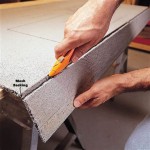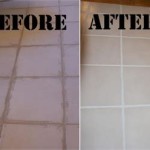Average Cost To Install Ceramic Floor Tile Per Square Foot in Portland, Oregon
Installing ceramic floor tile is a popular choice for Portland, Oregon homeowners seeking a durable, aesthetically pleasing, and water-resistant flooring solution. However, understanding the costs involved is crucial for budgeting and project planning. This article provides a comprehensive overview of the average cost to install ceramic floor tile per square foot in Portland, Oregon, examining the factors that influence pricing and offering insights into potential additional expenses.
The average cost to install ceramic floor tile in Portland can range significantly, typically falling between $8 and $25 per square foot, encompassing both materials and labor. This price range is broader than the national average due to regional variations in labor costs, material availability, and local demand. It's essential to obtain multiple quotes from licensed and insured flooring contractors in the Portland area to receive an accurate estimate for your specific project.
Key Factors Influencing Ceramic Tile Installation Costs
Several factors contribute to the overall cost of ceramic tile installation. Understanding these elements will help you anticipate potential expenses and make informed decisions throughout the project.
1. Material Costs: The price of the ceramic tile itself is a significant component of the overall cost. Ceramic tiles come in a wide variety of styles, sizes, and qualities, directly impacting their price per square foot. Basic, builder-grade ceramic tiles can be relatively inexpensive, while high-end, designer tiles can significantly increase the material cost. Large format tiles, which require more precise installation, may also contribute to higher labor costs. Porcelain tiles, often mistaken for ceramic, are typically more expensive than ceramic due to their increased durability and water resistance, although they are installed in a similar fashion.
Beyond the tiles themselves, other material costs include thin-set mortar (the adhesive used to bond the tiles to the subfloor), grout (used to fill the spaces between the tiles), sealant (to protect the grout), and underlayment (if the existing subfloor requires leveling or reinforcement). The quality and type of these materials also affect the overall cost. For example, epoxy grout, known for its superior stain resistance and durability, is more expensive than standard cement-based grout.
2. Labor Costs: Labor costs in Portland, Oregon, are generally higher than in many other parts of the country due to the region's higher cost of living and the demand for skilled tradespeople. The complexity of the installation will also impact labor costs. Simple, straightforward installations in small, square rooms will typically require less labor than intricate designs, complex patterns (like herringbone or mosaic), or installations in rooms with unusual shapes. The preparation of the subfloor, which can involve leveling, patching, or reinforcing, also adds to the labor time and therefore the cost.
Experienced and licensed flooring contractors will typically charge a higher hourly rate than less experienced or unlicensed individuals. However, hiring a qualified professional is essential to ensure the tiles are installed correctly, preventing future problems such as cracking, uneven surfaces, or water damage. Always verify a contractor's license and insurance before hiring them.
3. Subfloor Preparation: The condition of the existing subfloor is a critical factor affecting the cost of ceramic tile installation. A structurally sound and level subfloor is essential for a successful tile installation. If the subfloor is uneven, damaged, or unstable, it will need to be repaired or replaced before the tile can be installed. This can involve patching cracks, leveling uneven surfaces with self-leveling compound, or installing a new layer of underlayment. Subfloor repairs can significantly add to the overall cost of the project.
In some cases, the existing subfloor may be unsuitable for ceramic tile altogether, requiring complete replacement. This is particularly common in older homes with wood subfloors that have deteriorated over time. Replacing a subfloor is a more extensive and costly undertaking, but it is often necessary to ensure the long-term integrity of the tile installation.
Additional Cost Considerations for Ceramic Tile Installation
Beyond the core factors of materials, labor, and subfloor preparation, several other potential costs can arise during a ceramic tile installation project. Being aware of these possibilities will help you avoid unexpected expenses.
1. Removal and Disposal of Existing Flooring: If you are replacing existing flooring, the cost of removing and disposing of the old flooring must be factored into the budget. This can range from a relatively minor expense for removing carpet to a more substantial cost for removing and disposing of old tile or other difficult-to-remove flooring materials. Some contractors include this service in their overall estimate, while others charge it as a separate item.
2. Demolition and Reconstruction: In some cases, demolition work may be required before the tile can be installed. This could involve removing baseboards, trim, or even parts of walls to create a clean, level surface for the tile. After the tile is installed, these elements will need to be reinstalled, adding to the overall cost. Moving or removing appliances or plumbing fixtures can also add to the expenses.
3. Pattern Complexity and Design: As mentioned earlier, the complexity of the tile pattern can significantly impact labor costs. Simple, straight-lay patterns are generally the least expensive to install, while more intricate patterns such as herringbone, mosaic, or diagonal layouts require more skill and time, increasing the labor cost. Custom designs and borders will also add to the overall expense.
4. Room Size and Shape: The size and shape of the room can also affect the cost of installation. Smaller rooms often require more cuts and waste of materials, leading to higher material costs. Rooms with unusual shapes or numerous corners also require more precise cutting and fitting, increasing labor time. Very large rooms may require specialized equipment or techniques, which can also add to the cost.
5. Sealing and Maintenance: After the tile is installed, it is essential to seal the grout to protect it from stains and moisture. The cost of sealing can be included in the installation estimate or charged separately. Regular cleaning and maintenance are also necessary to keep the tile looking its best. While these ongoing costs are relatively minor, they should be considered when budgeting for the long-term cost of the tile installation.
6. Unexpected Issues: As with any home renovation project, unforeseen issues can arise during the installation process. For example, hidden plumbing problems or structural damage may be discovered once the existing flooring is removed. It's wise to set aside a contingency fund to cover any unexpected expenses that may arise.
Obtaining Accurate Estimates for Ceramic Tile Installation in Portland
To obtain accurate estimates for ceramic tile installation in Portland, Oregon, it is essential to follow these steps:
1. Get Multiple Quotes: Obtain at least three quotes from licensed and insured flooring contractors in the Portland area. This will allow you to compare prices and services and ensure you are getting a fair deal.
2. Provide Detailed Information: Provide contractors with as much information as possible about your project, including the size and shape of the room, the type of tile you want to use, and the condition of the existing subfloor. This will help them provide you with a more accurate estimate.
3. Ask Specific Questions: Ask contractors specific questions about their experience, their licensing and insurance, and their warranty policies. Also, ask about the materials they plan to use and their installation process.
4. Get a Written Contract: Once you have chosen a contractor, make sure to get a written contract that outlines the scope of work, the materials to be used, the total cost, and the payment schedule. Review the contract carefully before signing it.
5. Check References: Ask the contractor for references and contact them to inquire about their experience with the contractor's work ethic and quality of installation.
By following these steps, you can increase your chances of finding a qualified and reputable contractor and obtaining an accurate estimate for your ceramic tile installation project in Portland, Oregon.
In summary, the average cost to install ceramic floor tile in Portland, Oregon, is influenced by a variety of factors. By understanding the cost components and taking the necessary steps to obtain accurate estimates, homeowners can plan their projects effectively and ensure a successful installation.

How Much Does Ceramic Tile Installation Cost 2025

Cost Of Porcelain Tile Flooring Floor Tiles Fixr

Cost Of Porcelain Tile Flooring Floor Tiles Fixr

Portland Oregon Terrazzo Floor Cost Guide Craftsman Concrete Floors

Trafficmaster Portland Stone Gray 18 In X Glazed Ceramic Floor And Wall Tile 17 44 Sq Ft Case Ulmk18181pv The Home Depot

Trafficmaster Portland Stone Beige 18 In X Glazed Ceramic Floor And Wall Tile 348 8 Sq Ft Pallet Pt011818hdpl1pv The Home Depot

Trafficmaster Portland Stone Gray 18 In X Glazed Ceramic Floor And Wall Tile 348 8 Sq Ft Pallet Ulmk1818pl1pv The Home Depot

Cost To Install Tile The Home Depot

Guide How Much Does Outdoor Tile Installation Cost

How Much Does Tile Installation Cost 2025 Guide
Related Posts








